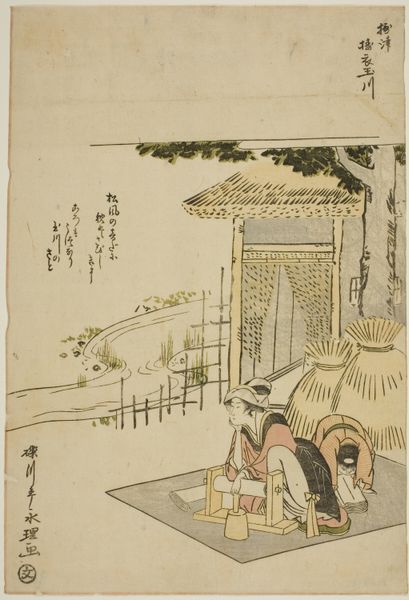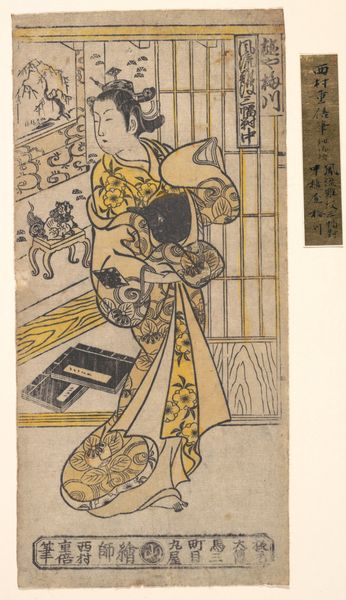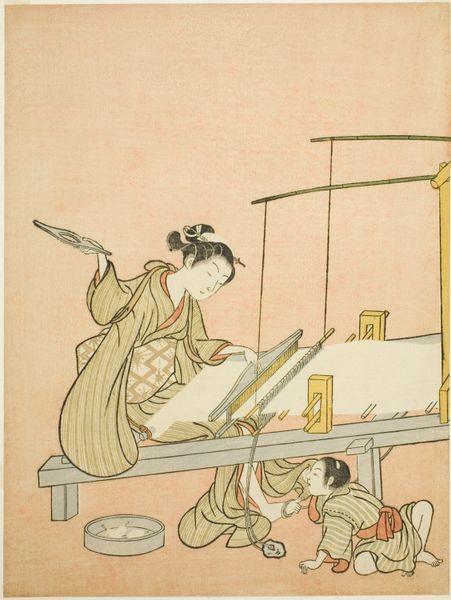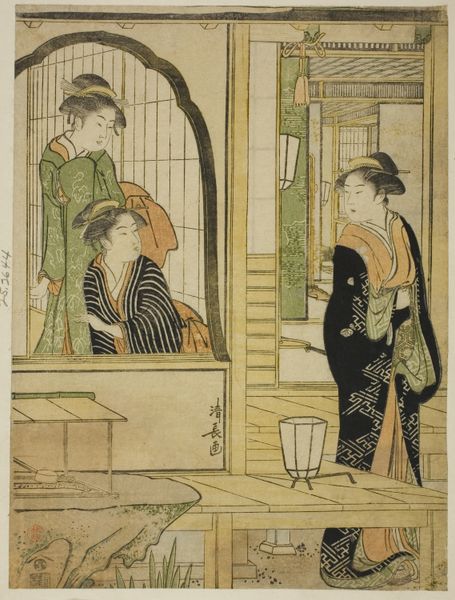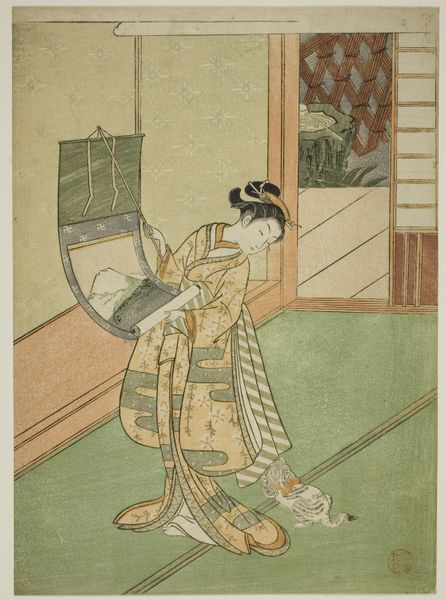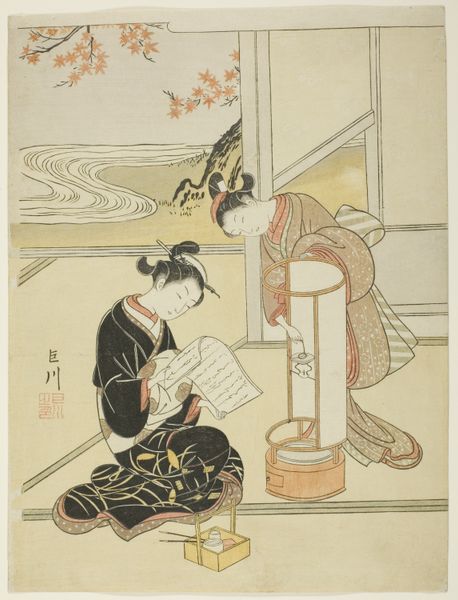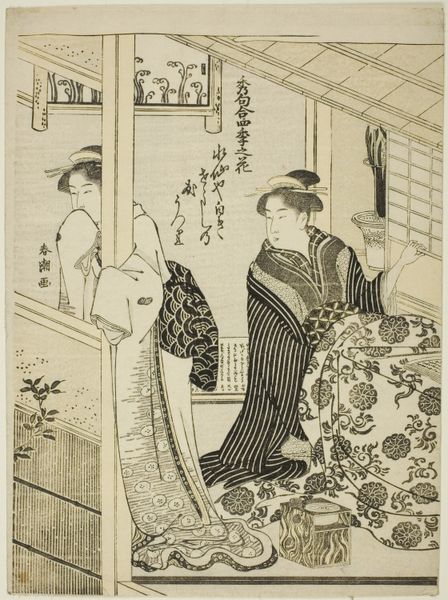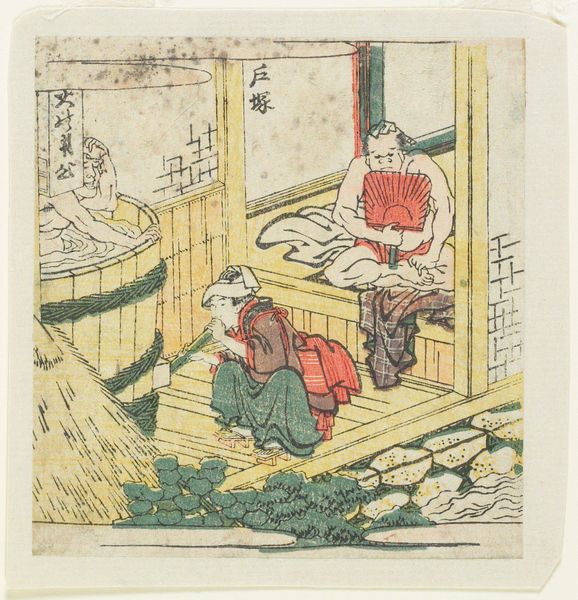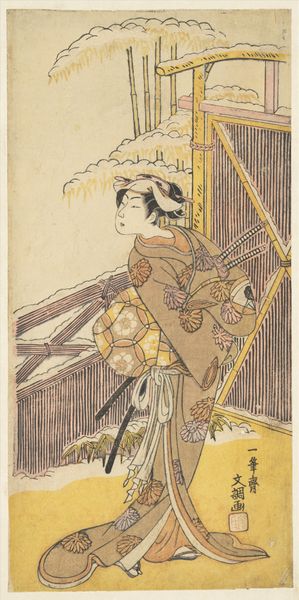
Poem by Fujiwara no Teika, from the series "Yoshiwara Courtesans in the Three Evenings (Yoshiwara keisei sanseki)" c. 1750
0:00
0:00
print, woodblock-print
#
portrait
# print
#
asian-art
#
ukiyo-e
#
figuration
#
woodblock-print
Dimensions: 28.8 × 13.5 cm (11 1/4 × 5 5/16 in.)
Copyright: Public Domain
Editor: So this is Okumura Masanobu's woodblock print, "Poem by Fujiwara no Teika, from the series Yoshiwara Courtesans in the Three Evenings," dating back to around 1750. It's currently at the Art Institute of Chicago. I find the setting intriguing—she seems both confined and yet intellectually free. How do you interpret this work, especially within its historical context? Curator: The print offers a lens into the complex roles women, specifically courtesans, occupied in Edo society. The courtesan, engrossed in a poem by Fujiwara no Teika, challenges the common perception of these women. How does her act of reading and engaging with classical poetry subvert prevailing social hierarchies? Editor: I suppose it humanizes them, presenting them as intellectual individuals instead of just commodities. Does the print also touch on issues of class and education during that time? Curator: Absolutely. Ukiyo-e prints were often consumed by a broad audience, yet this image hints at a cultivated sensibility, perhaps accessible to a select clientele. What connections can we draw between the image of the courtesan and the scroll painting in the background? How do these interior settings reflect social status? Editor: I see, the landscape in the scroll contrasts with her enclosed room. Almost as if it’s hinting at a longing for freedom or a different kind of life. Curator: Precisely. Consider too how Masanobu is using the Ukiyo-e style. Its accessibility allowed for a wider dissemination of these images, potentially sparking conversations around the representation of women and their place in society. Can we view it as an act of subtle resistance, offering a counter-narrative? Editor: It's fascinating how much a single image can reveal about social structures and individual aspirations. Thank you; I now appreciate how Ukiyo-e served not just as popular art but as a vehicle for nuanced commentary. Curator: It reveals art’s ability to challenge assumptions and reflect societal tensions. It also suggests new possibilities in historical understanding when looking through intersectional lenses.
Comments
No comments
Be the first to comment and join the conversation on the ultimate creative platform.

